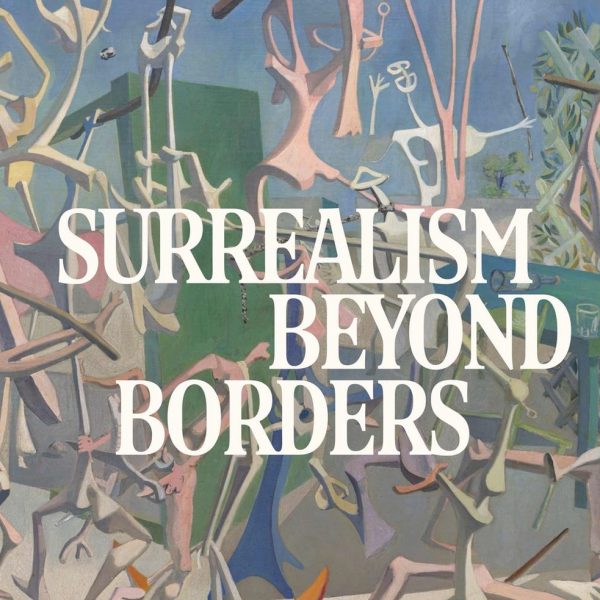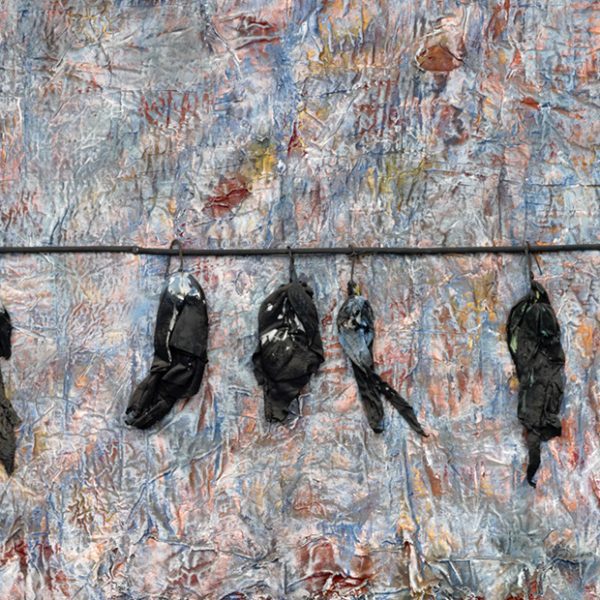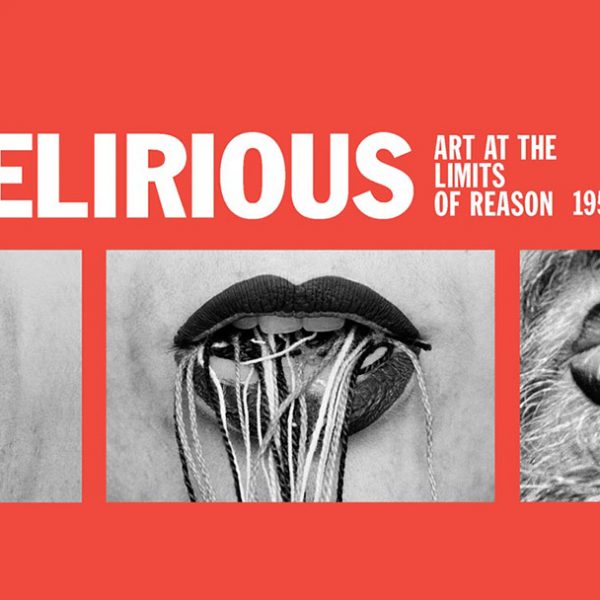From the Met: Featured Catalogue—Interview with Curator, Author, and World Book Award Recipient, Helen C. Evans.
The Metropolitan Museum of Art generously shared following post with the Yale ARTbooks blog. See the post on their blog.

Mary and Michael Jaharis Curator for Byzantine Art, Helen C. Evans traveled to Tehran, Iran, on February 8, 2014, to accept the 21st annual World Book Award for her book Byzantium and Islam: Age of Transition. The award was presented by the World Book Award Committee of the Islamic Republic of Iran’s Ministry of Culture and Religious Guidance.
Edited by Evans with Brandie Ratliff, Byzantium and Islam: Age of Transition is published by The Metropolitan Museum of Art and distributed by Yale University Press. The catalogue, which accompanied the Spring 2012 exhibition of the same name, explores the epochal transformations and unexpected continuities in the Byzantine Empire from the 7th to the 9th century. The Empire’s southern territories experienced historic upheavals as their Christian and Jewish communities were absorbed into the emerging Islamic world. By the 9th century an unprecedented cross-fertilization of cultures had taken place. Resplendent images of authority, religion, and trade—embodied in precious metals, brilliant textiles, fine ivories, elaborate mosaics, manuscripts, and icons, many of them never before published—highlight the dynamic dialogue between the rich array of Byzantine styles and the newly forming Islamic aesthetic. The book is 352 pages with 425 full-color illustrations and is available for purchase on the Met Store website. I recently had the opportunity to speak with Evans about her trip and the award-winning book.
Rachel High: First of all, congratulations on receiving the World Book Award. At the ceremony, Ayatollah Akbar Hashemi Rafsanjani, Expediency Council Chairman and former President of Iran, and Mohammad Reza Vasfi, Secretary of the World Book Award, both spoke. Was there an aspect of either of their talks that really stood out to you?
Helen Evans: Yes, Rafsanjani spoke at great length about intellectual freedom and freedom of thought, which I found somewhat surprising given the western conception of Iran today. It was an impressive talk, in which he was very passionate about the need for intellectual advancement. Mohammad Vasfi spoke very eloquently about the importance of the printed book, and especially the historical importance to Iranian culture of the written word and of the great authors in Iranian history, including many of the great poets of the Islamic world. It was a really lovely statement about the book as a book—not objecting to the move to having everything online, but rather a defense of the importance of the word as it is written down and printed.
RH: Byzantium and Islam is the catalogue for the third exhibition on Byzantine Art that you curated at the Met. You also were instrumental in beginning the Mary and Michael Jaharis Galleries of Byzantine Art, which were the first Byzantine Galleries in an encyclopedic museum. What draws you to objects from Byzantium and why do you think they are so often underrepresented in museums?
HE: Well, I think Byzantine Art is underrepresented because Byzantine history slowly disappeared from the way we look at the world. The empire ended at roughly the same moment that Columbus found the New World. When we do an exhibition like Interwoven Globe at the Met, it starts at 1500 and we don’t look at the fact that Byzantium was one of the great trade routes of the previous millennium and a half—or several millennia in fact. Until Columbus, you did not reach the spices of the orient; you did not reach the silks of China, without crossing the Eastern Mediterranean. But after that period, you don’t really need that region as much. When most academic scholarship really begins, Byzantium has been subsumed in the Ottoman Empire. So to a degree it is a recreation of a lost world. Recreating Byzantium, not as this Yeats-poetry-of-the-gilded-world Byzantium, but as this incredibly alive and vibrant trade route, has been one of the things that we have tried to do with our shows at the Met. Part of that has been to show how the Empire of Rome (because Byzantines called themselves Romans) ruled Constantinople (now Istanbul) as a state capital that interacted in 360 degrees. We’re interested not just in what Byzantium had to do with Western Europe, but what it had to do with the sources of its trade goods, such as India and China, and with the trade routes there. So Byzantium and Islam grew out of a desire to see what interactions you could prove and how Byzantine culture impacted the first generation of Islamic expansion to the Mediterranean, which later resulted in a loss of a huge amount of Byzantine territory and ultimately the Byzantine state converting the Slavs and expanding the empire north.
RH: What was the biggest challenge you faced when writing this book?
HE: The biggest challenge of any exhibition at the Met is getting the loans and getting the best authors. The catalogue actually includes loans from Egypt and Russia which for political reasons were never able to leave those countries.
RH: The time period covered in Byzantium and Islam is one of significant change. Can you pinpoint an object or a set of objects in the book and in the Met collection that really exemplify this transition?
HE: In the Byzantine collection we have the David Plates, which are of the reign of the Emperor Heraclius right at the beginning of the 7th century when the empire has defeated the Sasanians and appears to be growing again in stability. The weight of that silver and the quality of the workmanship attest to a culture that is rather confident about itself.

Plates with Scenes from the Life of David: Byzantine, Constantinople, 629 – 30 Silver, cast, hammered, engraved, punched, and chased (from left to right): Samuel Anoints David Diam. 26.6 cm ( 10 ½ in. ); 1,334 g; David and Goliath Battle Diam. 49.4 cm ( 19 7/16 in. ); 5,780 g; David Appears before Saul Diam. 27.2 cm ( 10 11/16 in. ); 1,397 g
The rise of Islam is so extensive, so quick, it takes Syria; Egypt, the breadbasket of the Byzantine Empire; and the North African coast, a region that had produced Roman Emperors and was long a part of Byzantium’s identity as the New Rome. What represents the transition to me is that when we Carbon 14 tested and dated a number of the textiles from Egypt, some dated from the Byzantine period (when Egypt was under rule from Constantinople) and others dated from into the period of Islamic rule by at least two centuries, but there is no change in style. This arrival of Islam, which is so tremendously transformative to the caliphate from the Islamic perspective, and which shrinks the Roman world from the Byzantine perspective, isn’t very visible in the first centuries. You see early mosques that have Byzantine elements in them, and we know that in some cases former bureaucrats of the Roman Empire served with the new bureaucrats of the Umayyad state. That was what was fascinating to me about Byzantium and Islam, it was really hard to sort objects between the 7th and 9th century and say this is so definitively another taste; it’s an aesthetic absorption.
RH: Aside from winning such a prestigious award, what was most memorable about your visit to Iran? Had you visited before?
HE: I’ve never been to Iran before. I’ve studied Iranian art in various ways, not necessarily always in an Iranian context. For my own areas of research, the most amazing things were the Sasanian rock cut reliefs. We went from Tehran, where the awards ceremony was, and where we were guests of the ministry, south to Isfahan and Shiraz including Persian and Sasanian sites, like Persepolis and Bishapur. I had always assumed that the Sasanian rock cut reliefs were up high and rather individual, but they are giant political posters! They’re carved along the rock faces right above your head. So if you were in a caravan train, you would be looking at the greatness of your rulers’ state. It doesn’t change what they are, it just changes how you interact with them, and I found that quite amazing. The Islamic sites were the mosque and the madrasas (buildings used for teaching Islamic theology and religious law), which were incredibly beautiful. I also found it quite lovely that in Isfahan, Arthur Pope, who was a great Islamic scholar of the 20th century, is buried with his wife, Phyllis Ackerman, in a very lovely tomb that was put up by the Isfahan government in the park by the river. Pope passed away in 1969, a time when you wouldn’t expect foreign scholars to be given such prestige and respect. I think this is evidence of the continuing respect in Iran for scholarship.
After our conversation, Helen Evans showed me the framed award and a signed certificate from the jury of the World Book Award. The certificate is prefaced by the following poem:
“In the Name of God”
Thou has come to unite, not to separate,
I look not at the tongue and speech,
I look at the inward [spirit] and the state [of feeling],
The religion of love is apart from all religions,
For lovers, the only religion and creed is; God
Moulana Jalaluddin Rumi
Masnavi, Book II




























